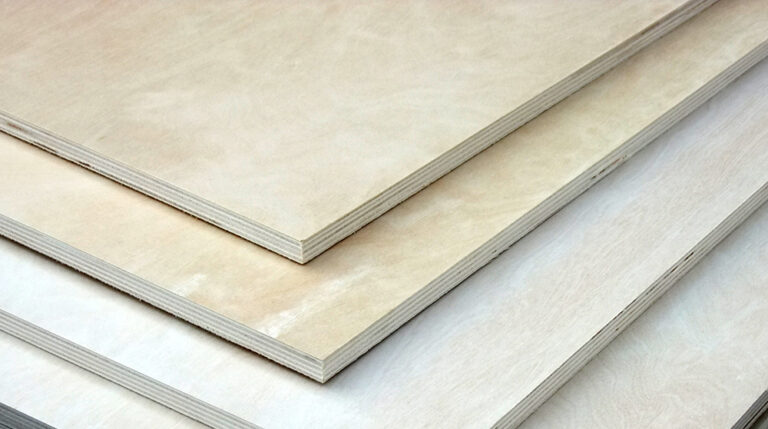The logs used to make each sheet are prepared by steaming or dipping into hot water and are then fed into a lathe, which peels the log into the thin plies of around 1mm – 4mm thick, which are used to form each layer of each sheet.It’s a widely used building material due to its many useful properties as well as its economical cost.
Plywood is majorly needed where one requires higher quality, high strength sheet material. It must resist cracking, breaking,,bending, warping and twisting.
Exterior glued plywood is good for outdoor use, but optimal performance happens when the moisture content is low. Subzero conditions do not affect the dimensional or strength properties of plywood so good for certain applications.
Here’s just a few examples of how plywood is used and why it is such an excellent choice of material for such uses:
1. Exterior Wall Sheathing
Common wall construction on new homes, especially in North America consist of a 2 foot x 4 foot or 2 foot by 6 foot frame skinned in exterior-grade plywood sheathing.
Plywood panels are used to fastened to each stud together to add strength and prevent vertical or horizontal shifting, keeping the frames structure intact and square.
This technique forms a structure that performs well under high wind and during earthquakes due to its flexible properties.
2. Interior Walls
Certain types of plywood are good for wood paneling or framing interior stud walls.
In most cases, the plywood will not be visible for the final finish however, some highly finished A-graded plywoods are very good for facing inwards and can painted or stained to give a stunning natural wood finish.
3. Roofing and Flooring
Plywood is commonly used to sheath roofs and as a subfloor on many internal flooring projects.
On floors, plywood panels may include tongue-and-groove edges that slot together to allow them to carry the required load without shifting or movement whilst on roofs, they can act as a very durable and suitable skin prior to laying tiles, metal or a membrane.
Plywood is excellent for both applications.
4. Other Construction
It’s not uncommon to find eaves and soffits covered with a plywood skin or made completely from ply.
Some plywoods are made specifically for use as a siding product to appear similar to reverse board and batten siding.
Builder contractors also commonly use plywood boards for constructing detached garages and sheds, for temporary floors and concrete forms.
5. Furniture
Plywood can be a very practical and cost effective material for building furniture.
In situations where one side needs to to look nice, a high grade plywood can be used whilst for the rest of the structure, a lower grade finish is fine.
Plywood is suitable for almost any furniture project imaginable within reason, so it’s not uncommon to find it used in custom built dressers, wardrobes, built in media centres, shelves, bookcases, console tables… in fact, the list is practically endless!
A good quality plywood is more than suitable for use on backs and sides of cabinets in most cases and is a far superior material to traditional chipboard or MDF as it lasts longer, doesn’t split and is far more durable.
6. General Projects
Due to its versatility, plywood is great for many other home projects from building skateboard ramps, to rabbit hutches to doghouses.

